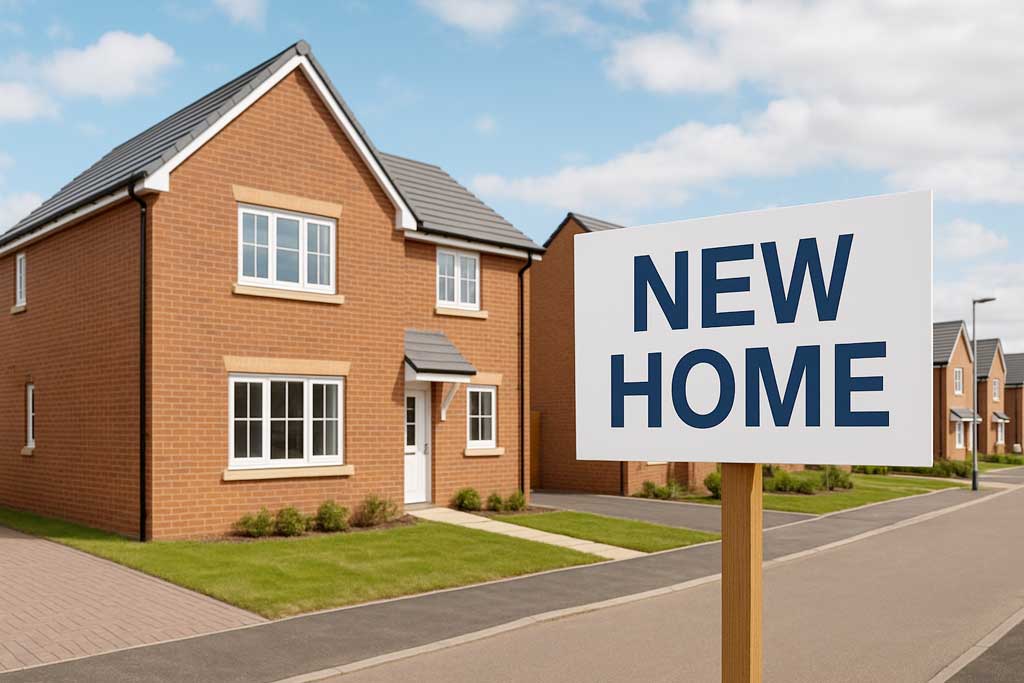Ask your parents about new builds, and you’ll likely hear stories about cramped 1980s estates with paper-thin walls. Ask someone under 40, and you’ll get a completely different perspective. Something fundamental has shifted in how younger generations view property, and it’s not just about preference—it’s about priority.
The question isn’t simply why buy a new build home. It’s about understanding how work patterns, environmental consciousness, and financial realities have fundamentally changed what makes a house worth buying.
The Remote Work Revolution Changed Everything
When working from home was an occasional perk, older properties with character were ideal. Now that 40% of workers have hybrid or remote arrangements, that Victorian charm becomes a liability. Poor insulation means background noise from heating systems during video calls. Inadequate electrical wiring can’t handle multiple devices charging simultaneously. Limited natural light makes eight-hour work days depressing.
New builds are designed for modern work patterns. Dedicated office spaces or flexible rooms, abundant power sockets, strong WiFi coverage, and soundproofing between rooms aren’t luxuries—they’re essentials. When you examine why buy a new build home, the answer for many professionals is simply: because my home is now my office, and it needs to function as both.
Environmental Anxiety Meets Practical Action
Younger buyers grew up with climate change as a constant backdrop. They’re not interested in properties that waste energy, regardless of how “authentic” the sash windows might be. An EPC rating of C or below isn’t just disappointing—it’s a dealbreaker.
New builds offer guilt-free living. Solar panels, heat pumps, superior insulation, and triple glazing mean your carbon footprint is dramatically lower. But this isn’t purely altruistic. With energy prices volatile and climate policies tightening, energy-efficient homes are future-proofed against both rising costs and potential environmental levies on inefficient properties.
The Financial Case for Green Living
A typical new build costs £900-£1,200 annually to heat and power. A comparable period property? £2,000-£2,500. Over a 30-year mortgage, that’s a £33,000-£39,000 saving. Sustainability isn’t just ethically appealing—it’s financially rational. That’s a compelling answer to why buy a new build home that transcends generational preferences.
The Maintenance Time Poverty Factor
Previous generations might have spent weekends repairing gutters or repointing brickwork. Today’s buyers are juggling careers, side hustles, childcare, and social lives. The idea of dedicating every Saturday to DIY isn’t romantic—it’s exhausting.
New builds come with 10-year structural warranties and minimal maintenance requirements for the first decade. No surprise boiler failures, no roof leaks, no rewiring projects. For time-poor professionals, that predictability is invaluable. Your weekends are yours, not your property’s.
Technology Integration That Actually Works
Smart thermostats, integrated security systems, EV charging points, and fibre broadband aren’t afterthoughts in new developments—they’re standard infrastructure. Retrofitting these into older properties is expensive and often compromises the installation quality.
When you consider why buy a new build home from a technology perspective, it’s about seamless integration. Everything works together because it was designed to, rather than bodged together over decades by various contractors with different standards.
The Hidden Value of Predictable Costs
First-time buyers, in particular, appreciate knowing exactly what they’re getting into financially. No hidden defects, no nasty surprises six months after moving in. The mortgage payment is the main cost, not the beginning of a long list of unexpected expenses.
New build warranties protect against major issues. Snagging lists address minor problems at the developer’s expense. There’s a clarity and predictability that allows for better financial planning—crucial when you’re already stretching to afford your first property.
Community Design for Modern Social Lives
Newer developments increasingly include communal spaces, co-working areas, package rooms, and social zones. For people who’ve experienced the community aspects of university halls or shared houses, these features recreate that connectivity in a more mature context.
Traditional streets have organic communities that developed over decades. New estates are designed with community-building features from day one: central green spaces, walking paths, and shared amenities that encourage interaction. It’s a different approach to neighbourhood-building, but not necessarily an inferior one.
The Equity Release Timing Advantage
Older properties might appreciate faster in established areas, but they also require constant investment to maintain value. New builds allow you to build equity without hemorrhaging cash on maintenance for the first decade.
For buyers planning to upsize within 10-15 years, this matters enormously. The money saved on repairs and the money saved on energy bills can be redirected into overpayments or savings, accelerating your path to your next property. When evaluating why buy a new build home as a stepping stone, this advantage becomes clear.
The Lifestyle Compatibility Test
Consider your actual lifestyle. Do you enjoy restoration projects? Do you have time for ongoing maintenance? Do you value architectural history over functional efficiency? Are you willing to compromise on energy costs for aesthetic charm?
There’s no wrong answer, but there’s enormous value in honest self-assessment. Many buyers who initially dismissed new builds discover that what they thought they wanted (character, history, uniqueness) matters less than what they actually need (reliability, efficiency, low maintenance).
Breaking Free from Property Tribalism
British property culture has long celebrated period homes as superior. This wasn’t always based on objective assessment—it was cultural preference elevated to universal truth. Younger buyers are questioning this assumption and reaching different conclusions.
They’re not rejecting older properties because they’re ignorant of their appeal. They’re choosing new builds because their priorities align better with what modern construction offers. Why buy a new build home? Because it matches how they actually live, not how their parents lived.
The Pragmatic Generation Makes Pragmatic Choices
The shift towards new builds among younger buyers isn’t a trend—it’s a realignment of property purchasing with contemporary life. Work patterns, environmental concerns, time constraints, and financial realities all point in the same direction.
This doesn’t mean new builds are objectively better than period properties. It means they’re better for a growing segment of buyers whose priorities differ from previous generations. Understanding that distinction is crucial for anyone trying to work out what type of property genuinely suits their life, rather than what property culture suggests they should want.
The question isn’t whether new builds are good. It’s whether they’re good for you. And increasingly, for younger buyers, the answer is yes.
Featured image: AI generated.



